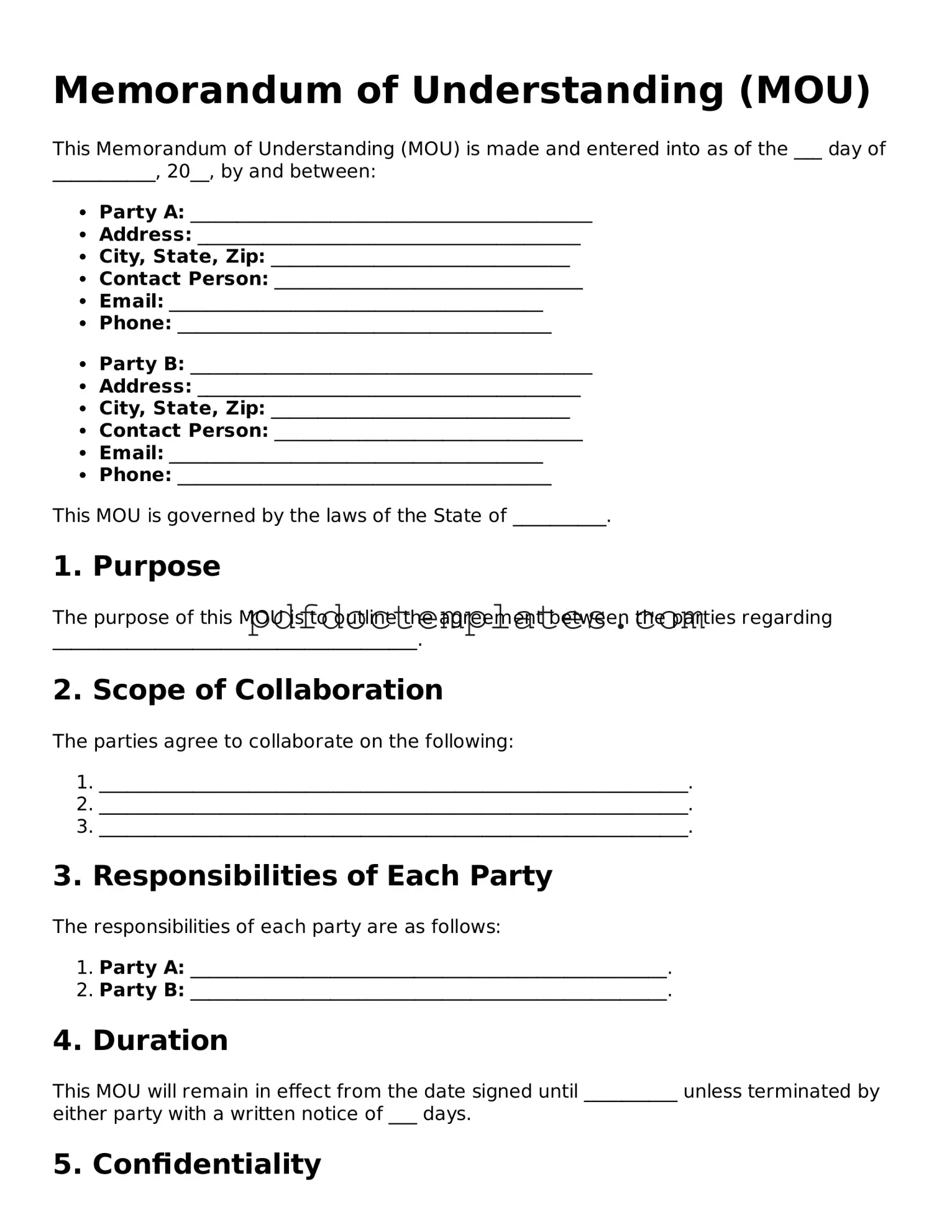Memorandum of Understanding (MOU)
This Memorandum of Understanding (MOU) is made and entered into as of the ___ day of ___________, 20__, by and between:
- Party A: ___________________________________________
- Address: _________________________________________
- City, State, Zip: ________________________________
- Contact Person: _________________________________
- Email: ________________________________________
- Phone: ________________________________________
- Party B: ___________________________________________
- Address: _________________________________________
- City, State, Zip: ________________________________
- Contact Person: _________________________________
- Email: ________________________________________
- Phone: ________________________________________
This MOU is governed by the laws of the State of __________.
1. Purpose
The purpose of this MOU is to outline the agreement between the parties regarding _______________________________________.
2. Scope of Collaboration
The parties agree to collaborate on the following:
- _______________________________________________________________.
- _______________________________________________________________.
- _______________________________________________________________.
3. Responsibilities of Each Party
The responsibilities of each party are as follows:
- Party A: ___________________________________________________.
- Party B: ___________________________________________________.
4. Duration
This MOU will remain in effect from the date signed until __________ unless terminated by either party with a written notice of ___ days.
5. Confidentiality
Both parties acknowledge that any confidential information shared during this collaboration shall not be disclosed to third parties without prior consent.
6. Amendments
Any amendments to this MOU must be made in writing and signed by both parties.
7. Signatures
By signing below, the parties agree to the terms and conditions outlined in this Memorandum of Understanding.
Party A:
___________________________
Name: ___________________________________
Date: _____________________
Party B:
___________________________
Name: ___________________________________
Date: _____________________
